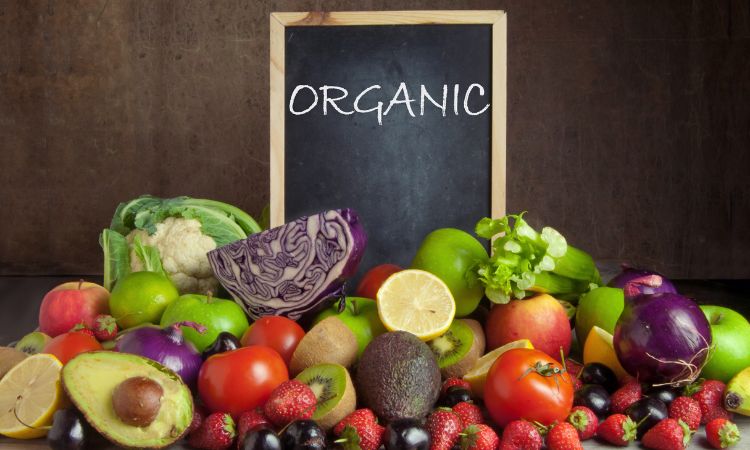The organic food industry in India has witnessed a remarkable surge in recent years, driven by growing consumer awareness about health, sustainability, and the benefits of organic farming. The India organic food market size reached a value of USD 1,510.36 million in 2023 and is expected to grow at a CAGR of about 22% in the forecast period of 2024 and 2032, reaching an impressive value of approximately USD 9,043.00 million by 2032. This growth trajectory highlights the increasing demand for organic products as Indian consumers become more health-conscious and environmentally aware.
Market Segmentation by Product Type
Organic Fruits and Vegetables
Among the various segments, organic fruits and vegetables hold a significant share in the India organic food market. The growing concerns over pesticide residues and chemically-laden produce have led consumers to opt for organic alternatives. This shift is further supported by an increasing number of health-conscious individuals who prioritize fresh, organic produce in their diets. Additionally, the rise of farm-to-table initiatives and the proliferation of organic markets across urban centers have made organic fruits and vegetables more accessible to the average consumer. The demand for these products is expected to continue growing as awareness of the benefits of organic farming practices spreads.
Organic Beverages
Organic beverages, including organic teas, juices, and health drinks, are rapidly gaining popularity in India. The segment has seen significant innovation, with companies introducing a variety of organic drinks that cater to different tastes and health needs. Organic teas, particularly green tea and herbal blends, are favored for their health benefits, such as antioxidant properties and stress relief. Similarly, organic juices and health drinks, free from artificial additives and preservatives, appeal to consumers looking for natural and nutritious options. As more people turn to organic beverages as part of a healthy lifestyle, this segment is expected to see robust growth in the coming years.
Organic Meat, Fish, and Poultry
The market for organic meat, fish, and poultry is another area experiencing growth, albeit at a slower pace compared to other segments. Consumers are increasingly seeking out meat products that are free from antibiotics, hormones, and other harmful substances. Organic certification ensures that the animals are raised in humane conditions and fed organic feed, aligning with the ethical and health-conscious values of modern consumers. Although the segment faces challenges such as higher costs and limited availability, it represents a growing niche market with substantial potential.
Organic Dairy Products
Organic dairy products have garnered significant attention in India, especially among consumers who are concerned about the quality and safety of conventional dairy products. The demand for organic milk, yogurt, cheese, and other dairy products is driven by factors such as lactose intolerance, concerns about antibiotics and hormones in dairy, and a preference for natural and minimally processed foods. The shift towards plant-based alternatives has also influenced the organic dairy market, with products like almond milk and soy yogurt gaining traction.
Organic Processed Food
The organic processed food segment has seen a steady rise in demand as consumers seek convenient yet healthy options. This category includes a wide range of products, from organic snacks and ready-to-eat meals to organic baby food and condiments. The convenience of these products, combined with their health benefits, has made them popular among busy professionals and health-conscious families. The growth of this segment is likely to continue as more companies introduce innovative organic processed foods that cater to the evolving tastes and preferences of Indian consumers.
Other Organic Products
In addition to the primary categories mentioned above, the India organic food market also includes other niche products that are gaining popularity. These may include organic spices, grains, pulses, and oils, which are integral to Indian cuisine. The growing interest in holistic health and wellness has also spurred demand for organic superfoods and dietary supplements.
Market Segmentation by Distribution Channel
Supermarkets and Hypermarkets
Supermarkets and hypermarkets play a crucial role in the distribution of organic food products in India. These large retail chains provide a wide range of organic options, making it easier for consumers to access and purchase organic products. The organized retail sector’s growth has significantly contributed to the penetration of organic food in urban markets, where consumers are more likely to shop at these stores. Additionally, the availability of organic food in supermarkets and hypermarkets has helped raise awareness and educate consumers about the benefits of organic products.
Other Distribution Channels
Beyond supermarkets and hypermarkets, other distribution channels such as e-commerce platforms and specialty organic stores have also seen substantial growth. The convenience of online shopping, coupled with the availability of a diverse range of organic products, has made e-commerce a popular choice for many consumers. Specialty stores, which focus exclusively on organic and natural products, have also gained a loyal customer base. These stores often provide a more personalized shopping experience and offer products that may not be available in mainstream retail outlets.
Regional Analysis
North India
North India is a significant market for organic food, driven by a combination of factors such as high disposable income, increased health awareness, and a strong presence of organized retail chains. Cities like Delhi, Gurgaon, and Chandigarh are leading the way in terms of organic food consumption. The region also benefits from favorable climatic conditions that support organic farming, contributing to the supply of organic produce.
South India
South India is another important region for the organic food market, with a long-standing tradition of organic farming practices. States like Kerala, Tamil Nadu, and Karnataka have seen a growing demand for organic products, supported by government initiatives and local awareness campaigns. The region’s emphasis on traditional, natural farming methods has also played a role in the widespread acceptance of organic food.
East and West India
While North and South India are the frontrunners in the organic food market, East and West India are emerging as key markets with significant growth potential. In the East, states like West Bengal and Odisha are gradually embracing organic food, driven by increasing consumer awareness. In the West, cities like Mumbai and Pune are witnessing a rise in demand for organic products, particularly among the urban middle class and health-conscious millennials.
Competitive Landscape
The India organic food market is highly competitive, with a mix of established players and new entrants vying for market share. Key players in the market include organic food brands, large FMCG companies, and startups specializing in organic products. These companies are constantly innovating and expanding their product portfolios to cater to the diverse needs of Indian consumers. The competitive landscape is also characterized by strategic partnerships, mergers, and acquisitions, as companies seek to strengthen their market presence.
Challenges and Opportunities
The organic food market in India faces several challenges, including high production costs, supply chain inefficiencies, and limited consumer awareness in rural areas. However, these challenges also present opportunities for growth and innovation. Companies that can overcome these hurdles by investing in sustainable farming practices, efficient supply chains, and consumer education are likely to thrive in this rapidly growing market.
Market Forecast (2024-2032)
The India organic food market is expected to witness substantial growth between 2024 and 2032, driven by increasing consumer demand, favorable government policies, and advancements in organic farming techniques. The market is projected to grow at a CAGR of 22%, reaching a value of USD 9,043.00 million by 2032. Key trends to watch include the rise of organic e-commerce platforms, the expansion of organic product lines, and the growing influence of health and wellness on consumer purchasing decisions.


